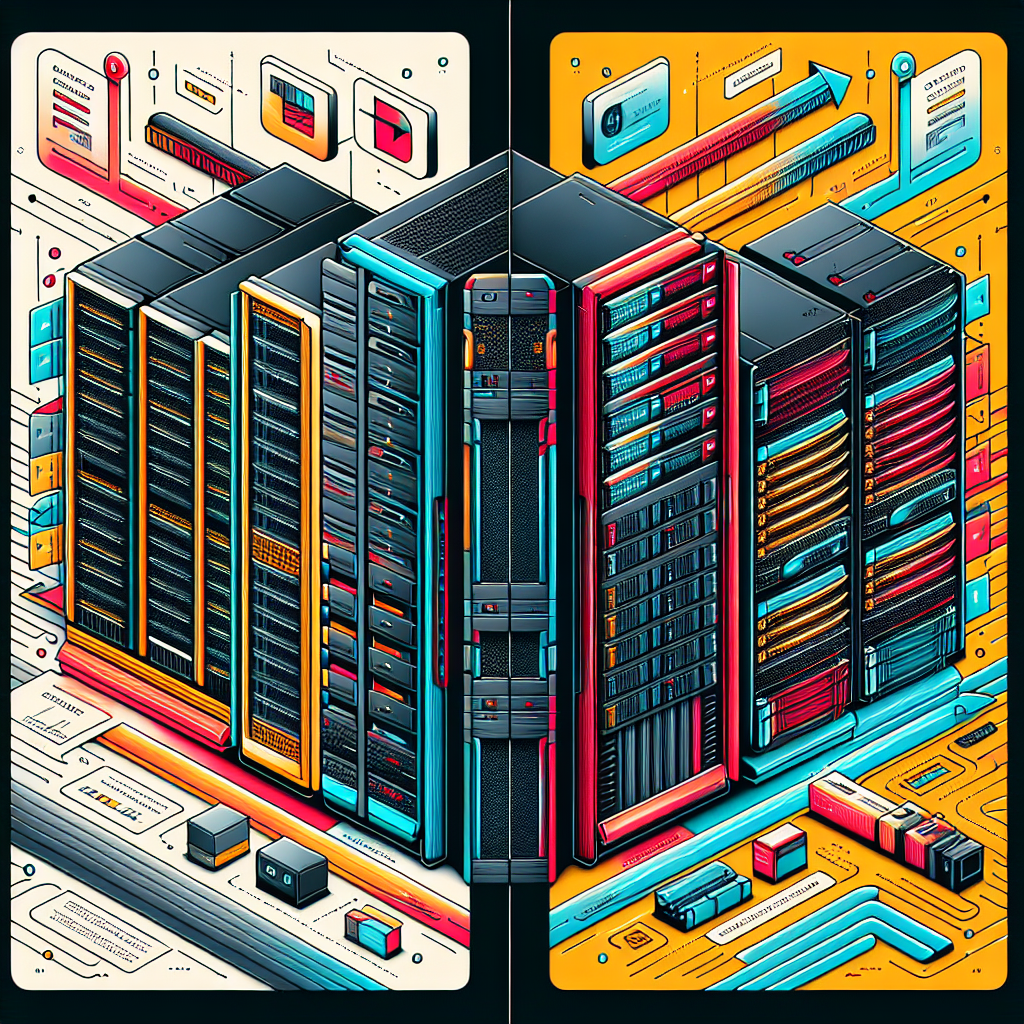Your cart is currently empty!
Comparing Different Types of Data Center Servers: Rackmount vs. Blade Servers

Data centers are essential for businesses to store and manage their data and applications efficiently. When it comes to choosing the right type of server for a data center, two popular options are rackmount servers and blade servers. Both serve the same purpose of processing data and handling applications, but they have distinct differences in terms of form factor, scalability, and performance. In this article, we will compare rackmount servers and blade servers to help you make an informed decision for your data center needs.
Rackmount servers are the traditional choice for data centers. They are standalone servers that are mounted on a rack, hence the name. These servers are compact and easy to install, making them a popular choice for small to medium-sized businesses. Rackmount servers come in various sizes, ranging from 1U to 4U, with the number indicating the height of the server unit. They are designed for easy maintenance and upgrades, as components can be replaced or added without disrupting the entire system.
On the other hand, blade servers are a more modern and space-efficient option for data centers. Blade servers are housed in a chassis that can hold multiple server blades, each containing its own CPU, memory, and storage. This modular design allows for easy scalability and expansion, making blade servers ideal for large enterprises with growing data center needs. Blade servers are also known for their high-density computing power, as multiple servers can be housed in a single chassis, reducing the overall footprint of the data center.
In terms of performance, blade servers have the edge over rackmount servers due to their higher processing power and advanced cooling systems. Blade servers are designed for high performance computing and can handle complex workloads with ease. However, rackmount servers are still a reliable choice for businesses with less demanding computing needs. Rackmount servers are more cost-effective and easier to manage for small to medium-sized businesses.
When it comes to scalability, blade servers are the clear winner. Blade servers can be easily added or removed from the chassis, allowing for quick upgrades and expansions. This flexibility makes blade servers a popular choice for businesses that need to scale their data center infrastructure quickly. Rackmount servers, on the other hand, may require more time and effort to upgrade or expand, as each server unit needs to be individually maintained.
In conclusion, both rackmount servers and blade servers have their own strengths and weaknesses. Rackmount servers are a reliable and cost-effective option for small to medium-sized businesses, while blade servers offer high performance and scalability for larger enterprises. When choosing between the two types of servers, consider your business’s current and future needs, budget, and scalability requirements. Ultimately, the right choice will depend on your specific data center requirements and goals.

Leave a Reply